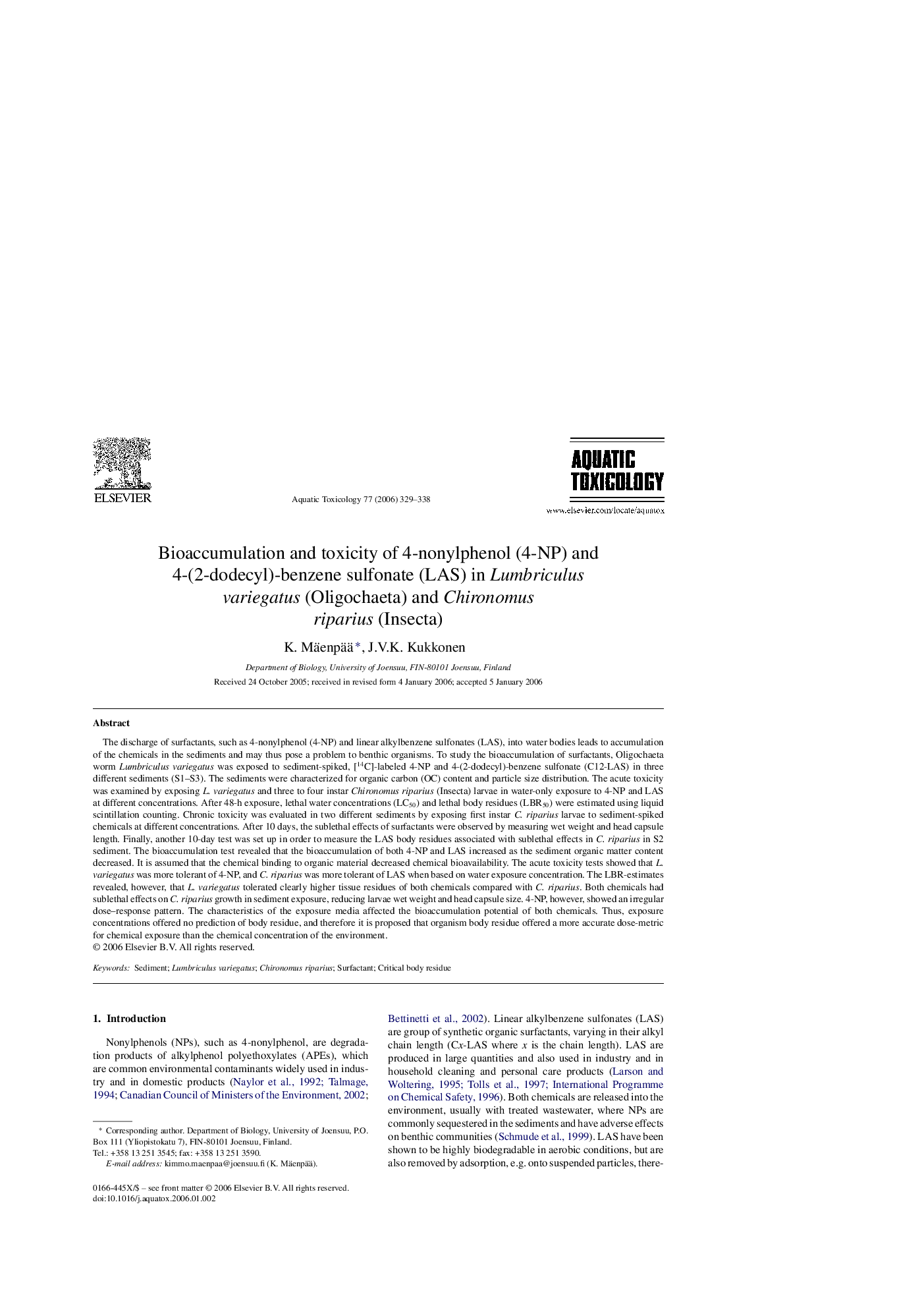| Article ID | Journal | Published Year | Pages | File Type |
|---|---|---|---|---|
| 4531400 | Aquatic Toxicology | 2006 | 10 Pages |
The discharge of surfactants, such as 4-nonylphenol (4-NP) and linear alkylbenzene sulfonates (LAS), into water bodies leads to accumulation of the chemicals in the sediments and may thus pose a problem to benthic organisms. To study the bioaccumulation of surfactants, Oligochaeta worm Lumbriculus variegatus was exposed to sediment-spiked, [14C]-labeled 4-NP and 4-(2-dodecyl)-benzene sulfonate (C12-LAS) in three different sediments (S1–S3). The sediments were characterized for organic carbon (OC) content and particle size distribution. The acute toxicity was examined by exposing L. variegatus and three to four instar Chironomus riparius (Insecta) larvae in water-only exposure to 4-NP and LAS at different concentrations. After 48-h exposure, lethal water concentrations (LC50) and lethal body residues (LBR50) were estimated using liquid scintillation counting. Chronic toxicity was evaluated in two different sediments by exposing first instar C. riparius larvae to sediment-spiked chemicals at different concentrations. After 10 days, the sublethal effects of surfactants were observed by measuring wet weight and head capsule length. Finally, another 10-day test was set up in order to measure the LAS body residues associated with sublethal effects in C. riparius in S2 sediment. The bioaccumulation test revealed that the bioaccumulation of both 4-NP and LAS increased as the sediment organic matter content decreased. It is assumed that the chemical binding to organic material decreased chemical bioavailability. The acute toxicity tests showed that L. variegatus was more tolerant of 4-NP, and C. riparius was more tolerant of LAS when based on water exposure concentration. The LBR-estimates revealed, however, that L. variegatus tolerated clearly higher tissue residues of both chemicals compared with C. riparius. Both chemicals had sublethal effects on C. riparius growth in sediment exposure, reducing larvae wet weight and head capsule size. 4-NP, however, showed an irregular dose–response pattern. The characteristics of the exposure media affected the bioaccumulation potential of both chemicals. Thus, exposure concentrations offered no prediction of body residue, and therefore it is proposed that organism body residue offered a more accurate dose-metric for chemical exposure than the chemical concentration of the environment.
